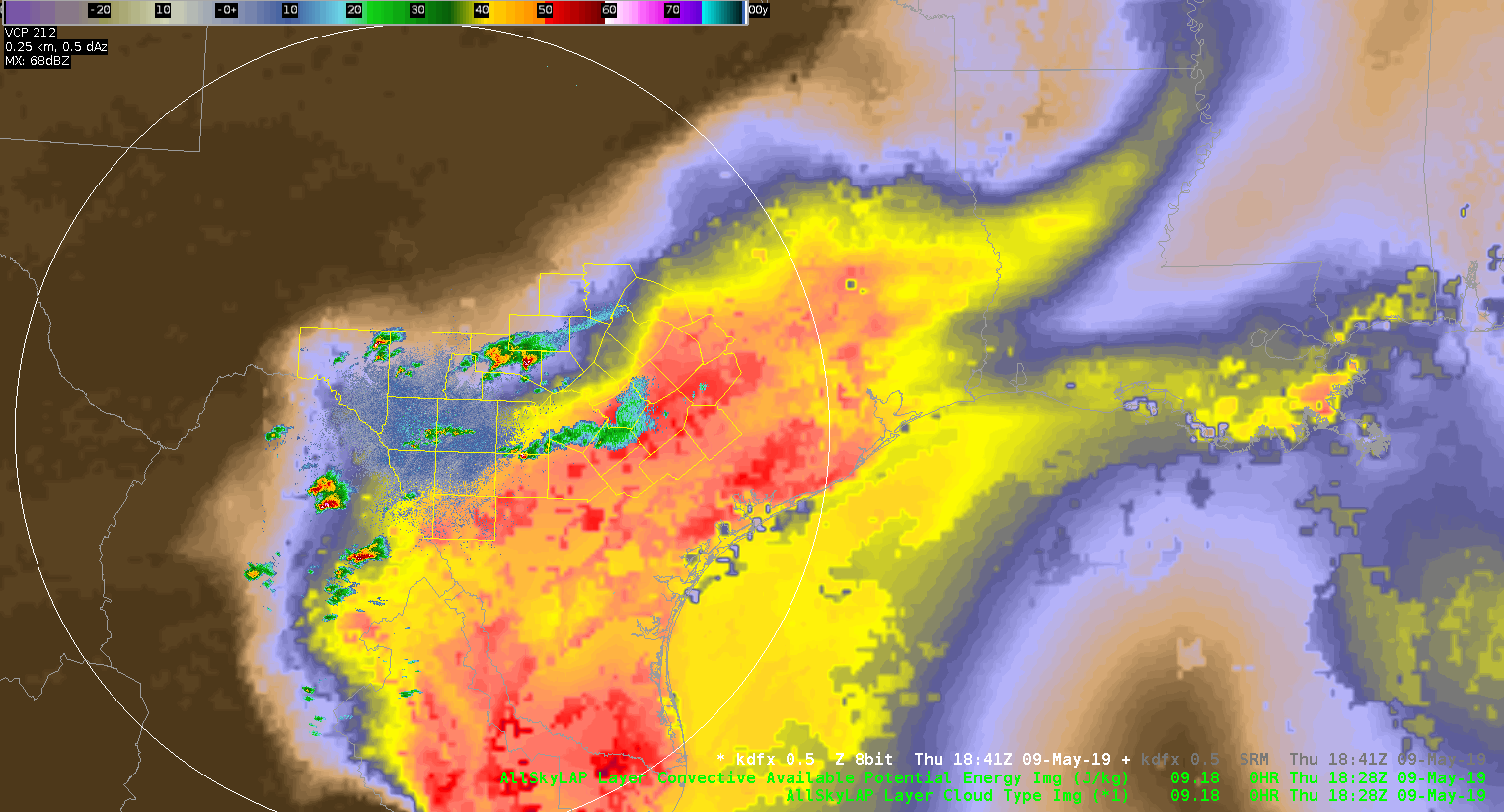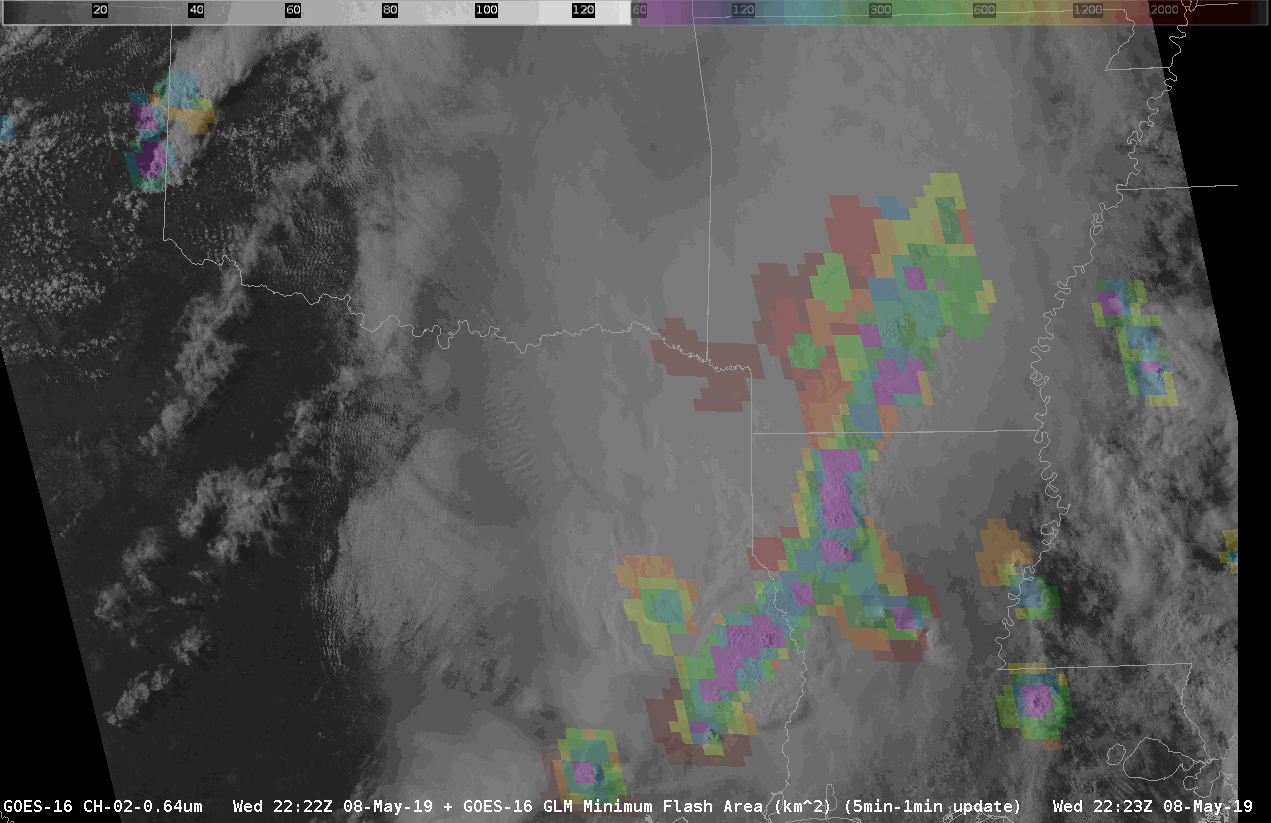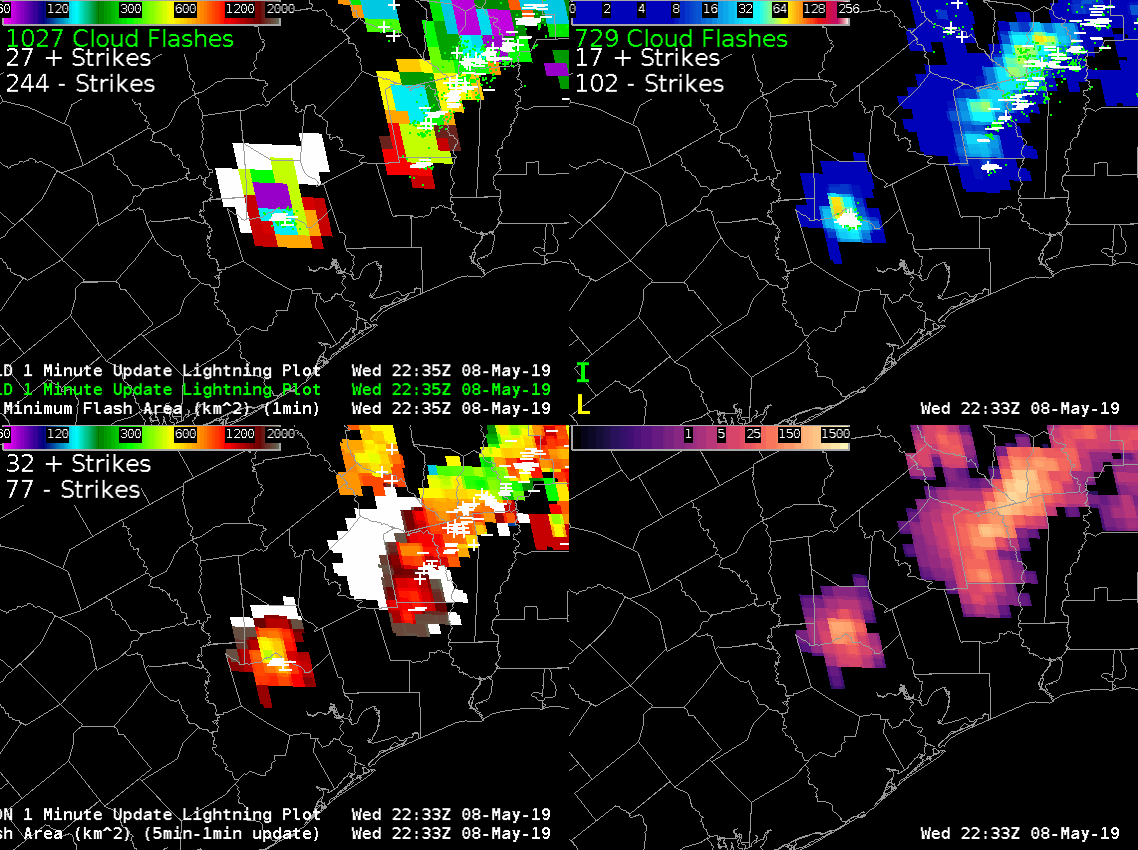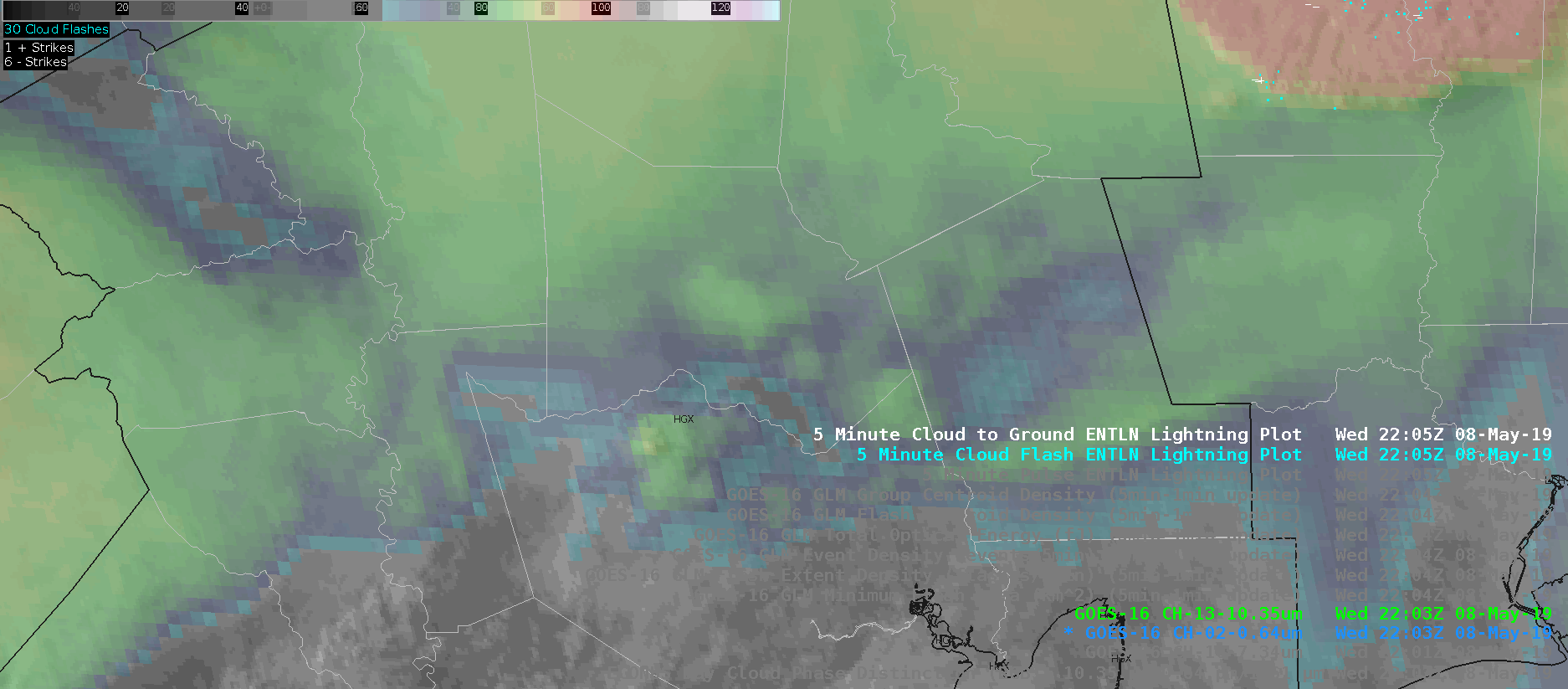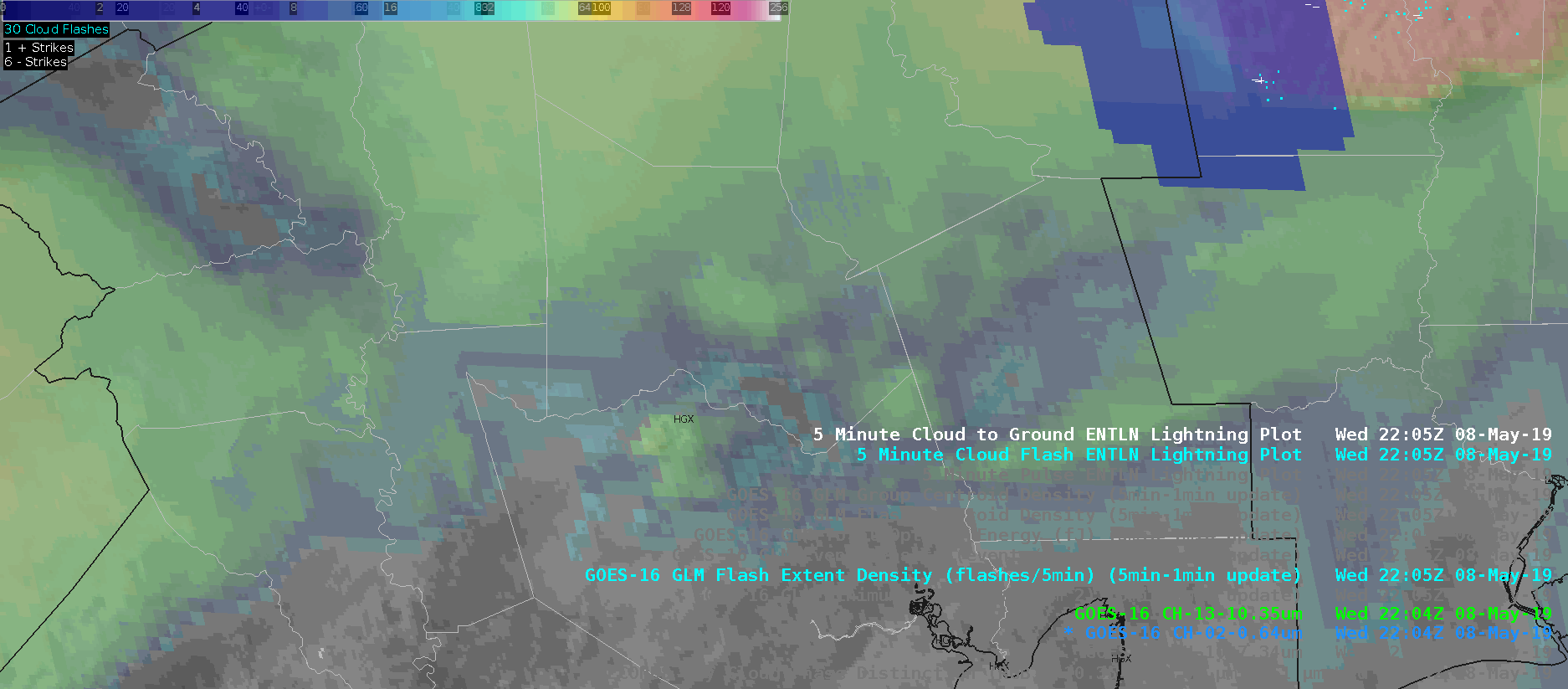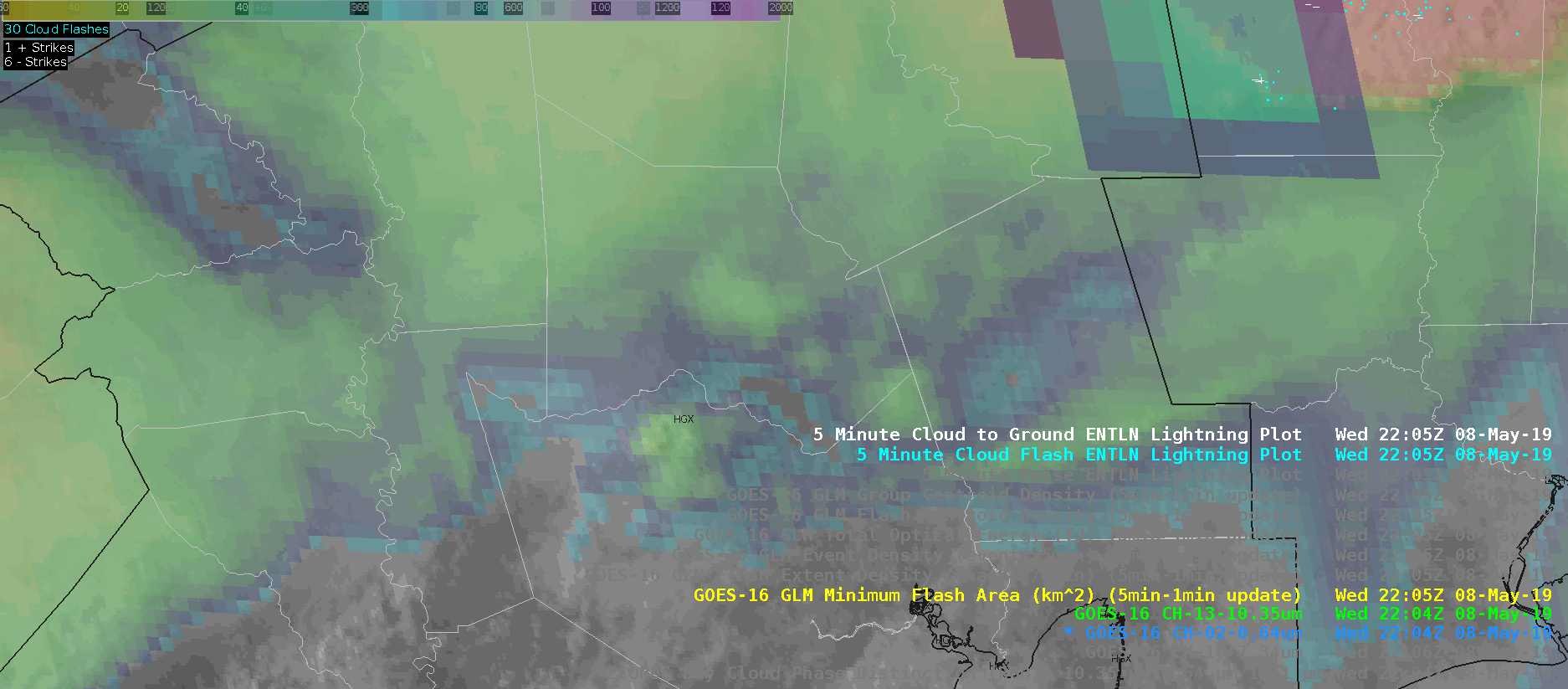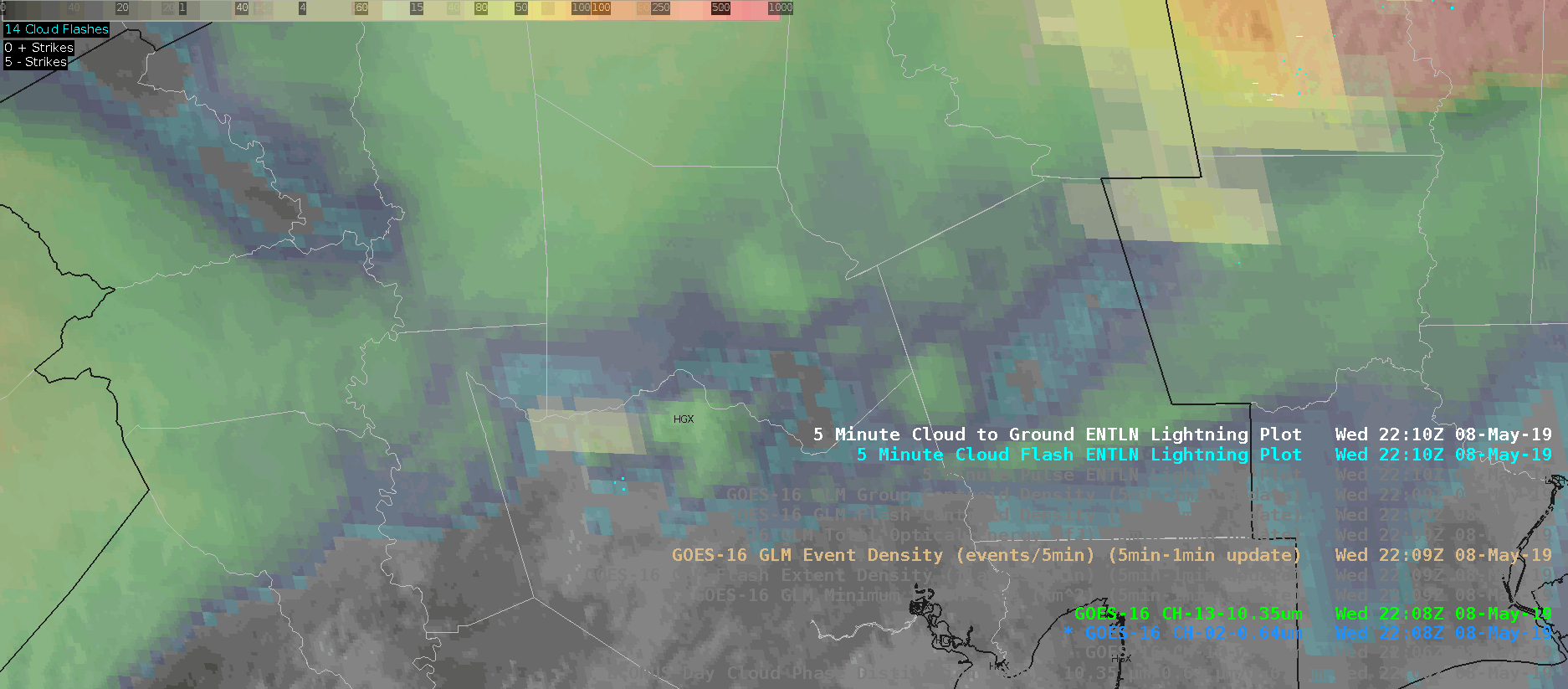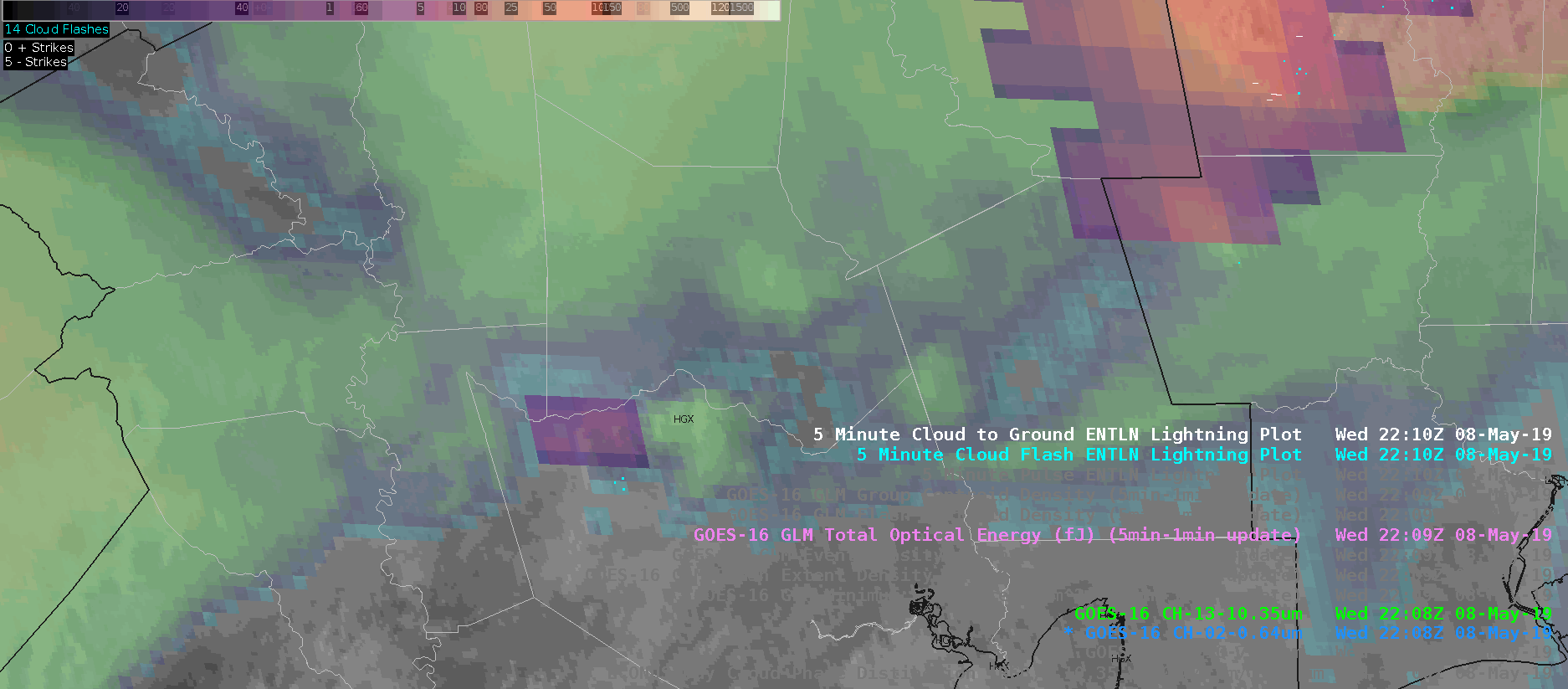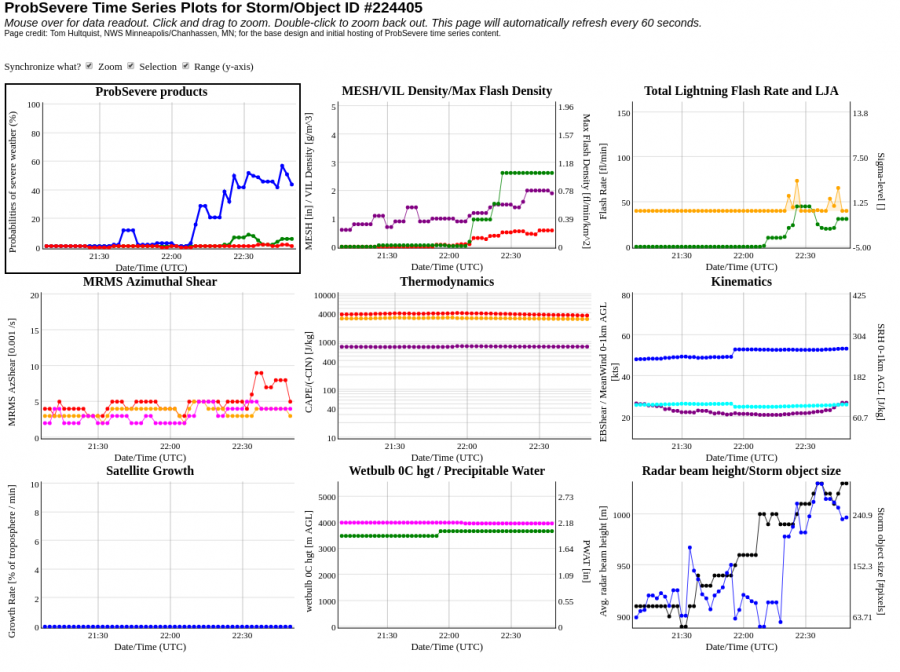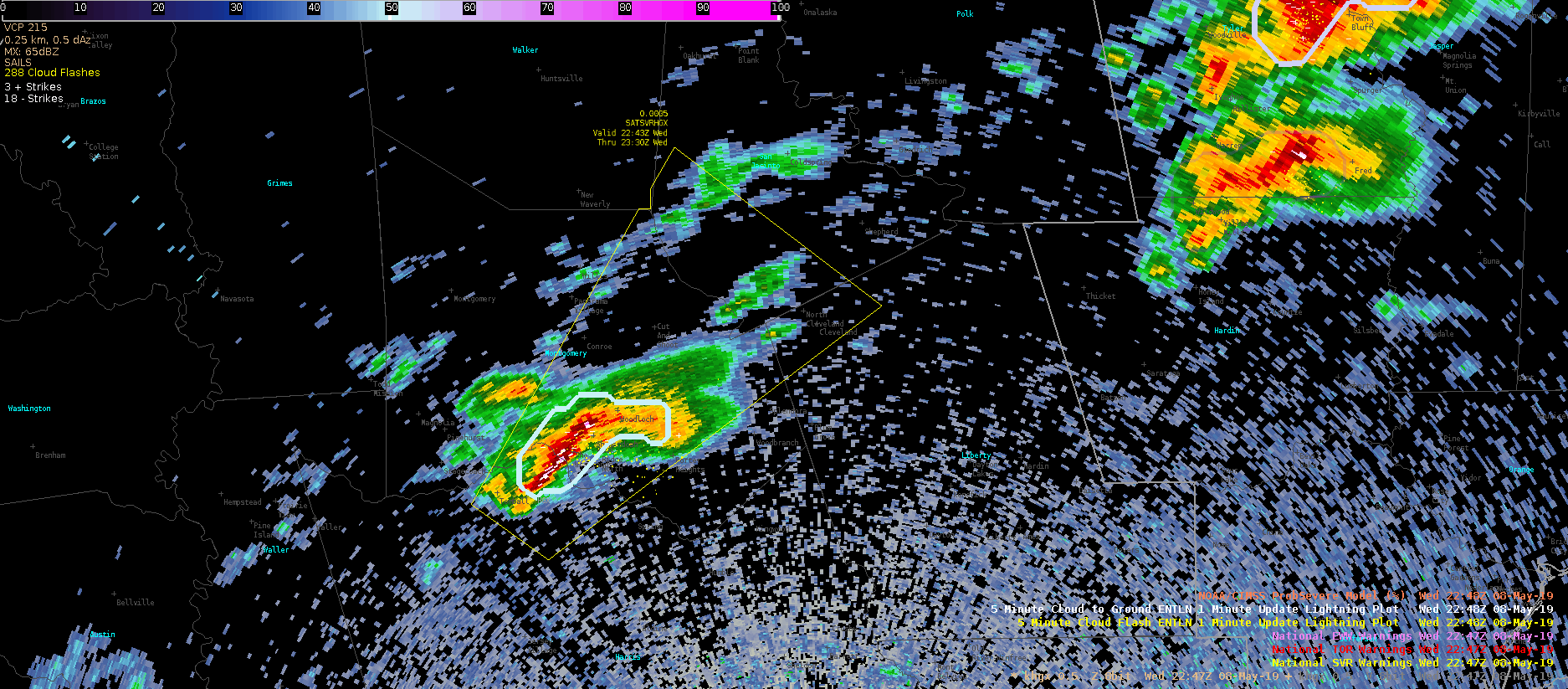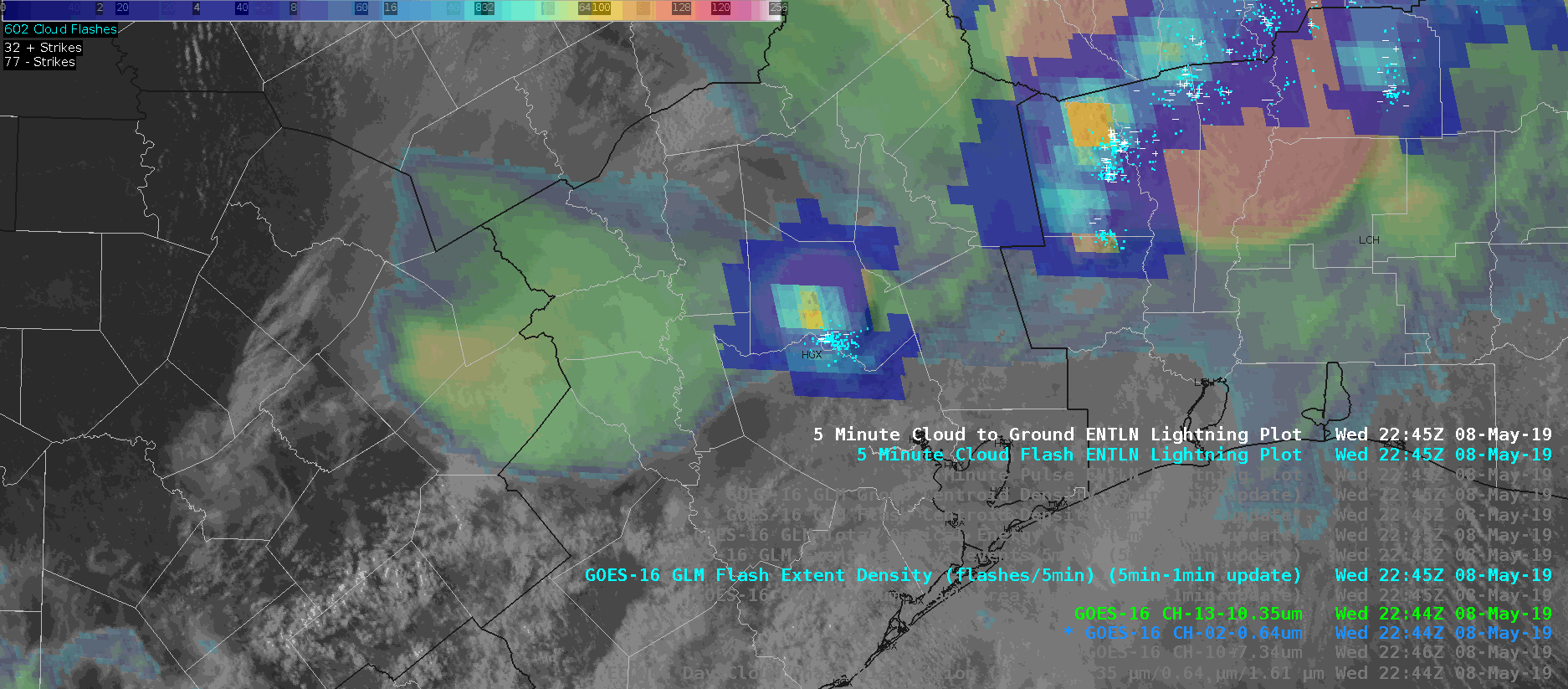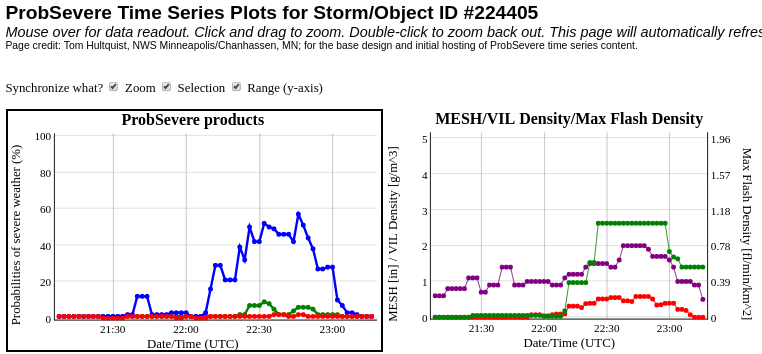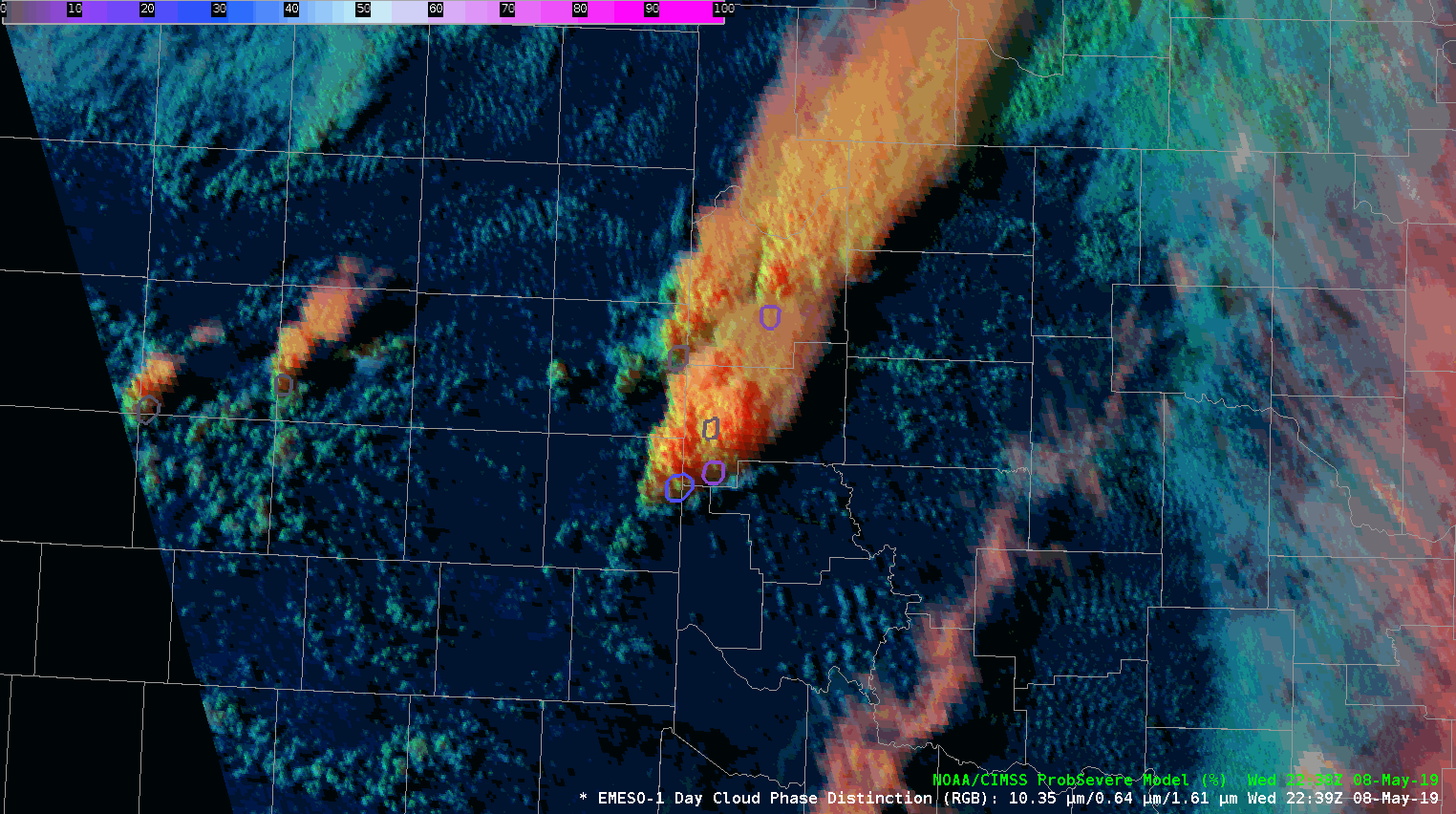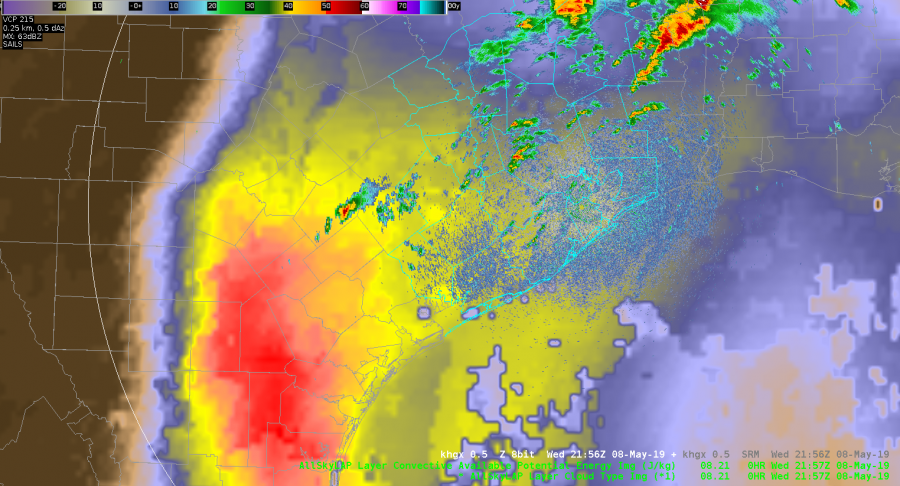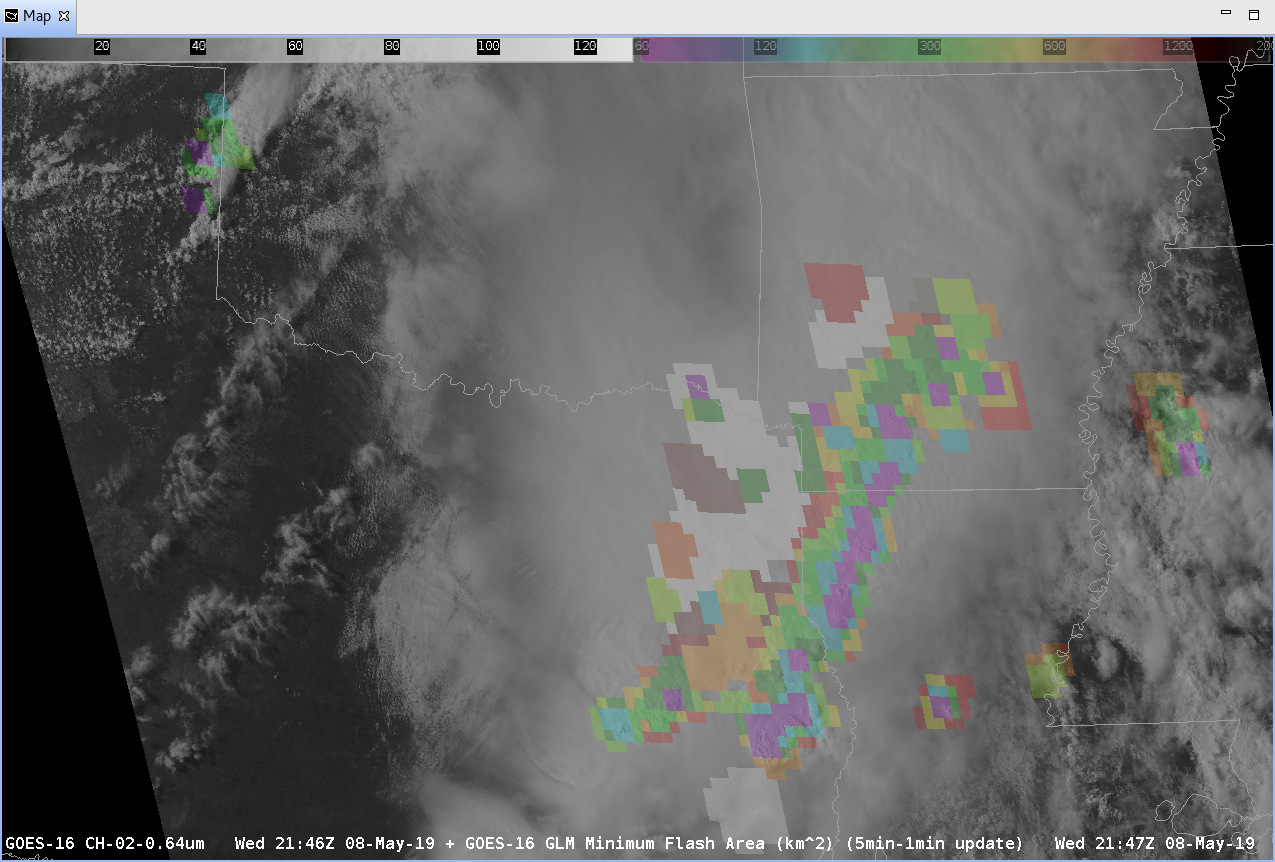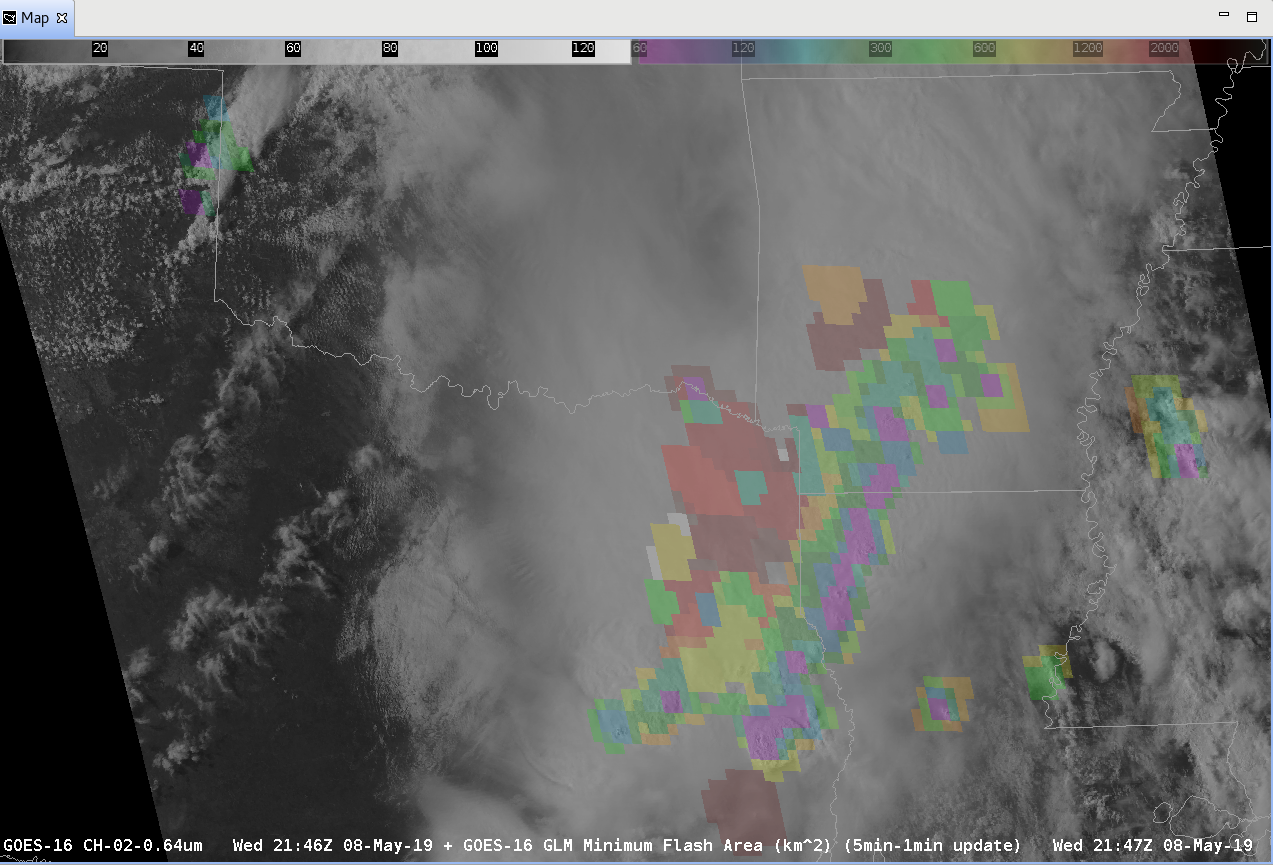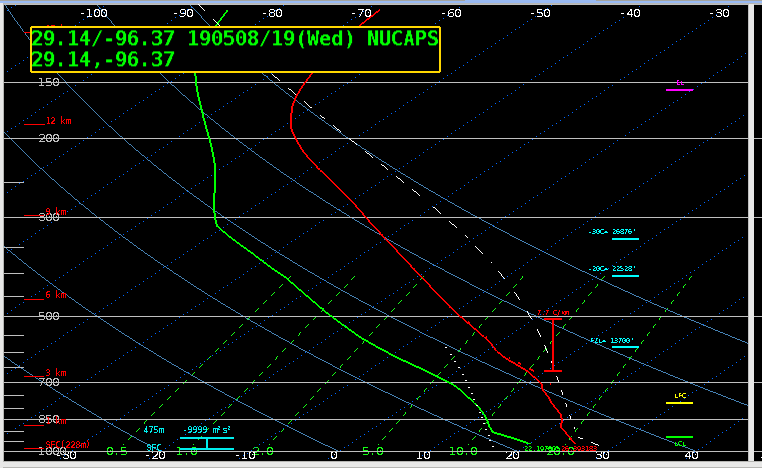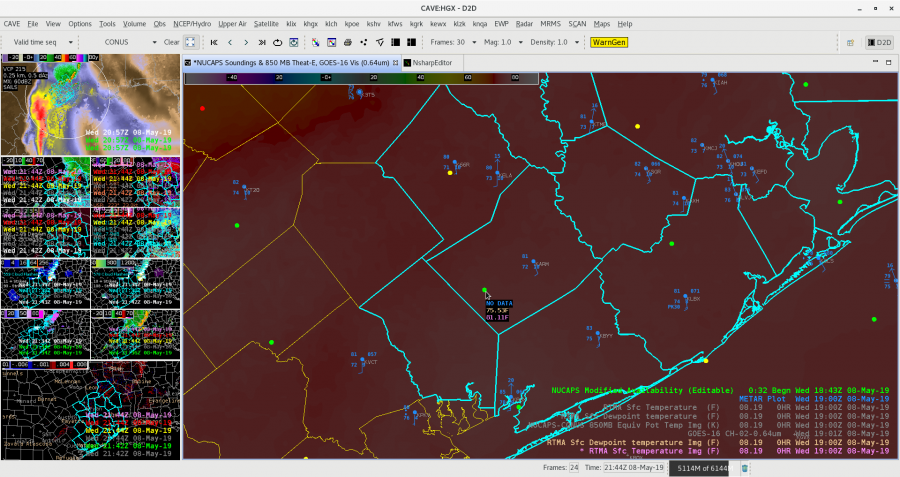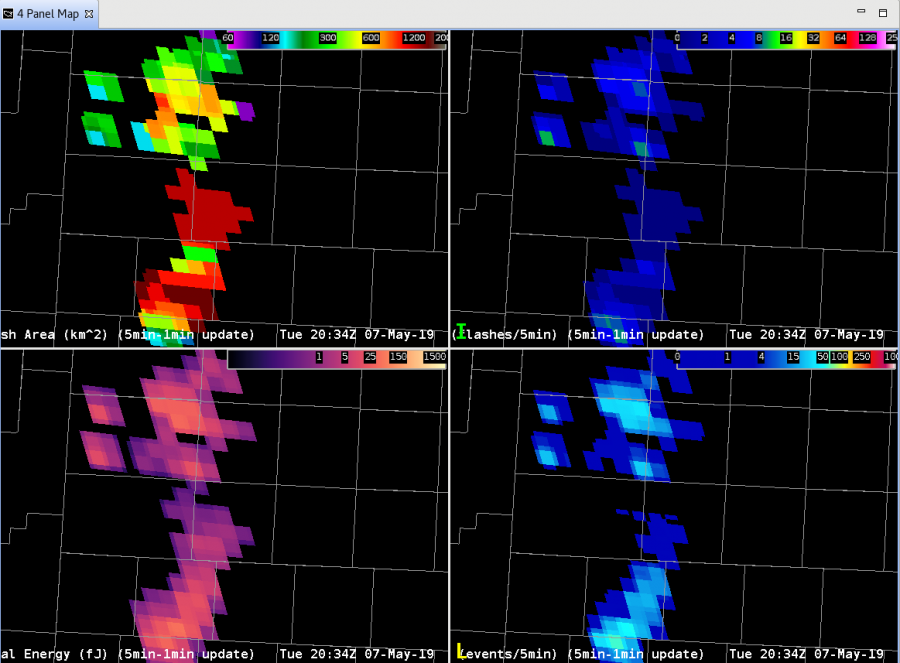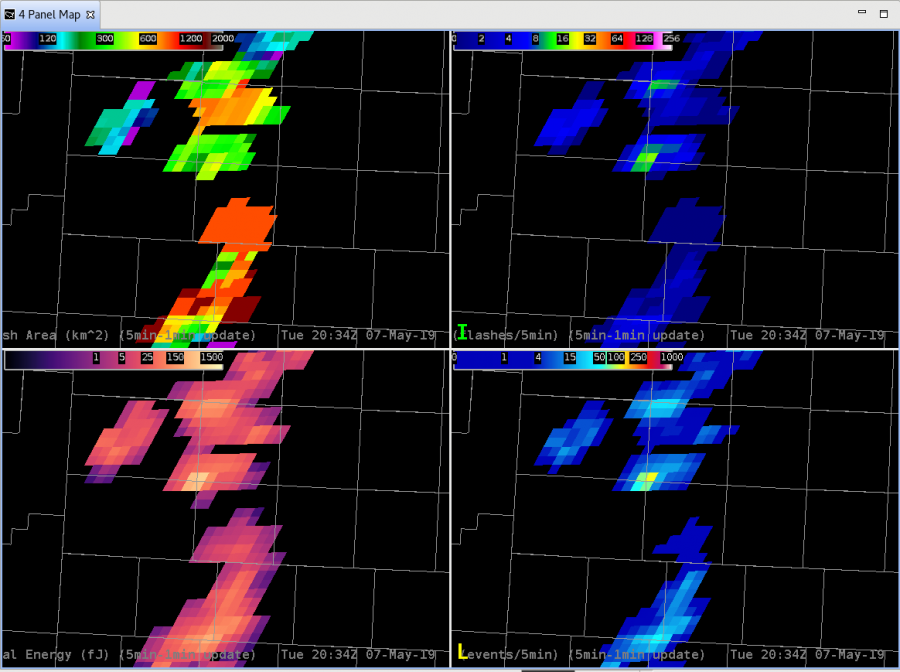Having both GOES-E and GOES-W GLM data provides some interesting opportunities to compare how the two instrument’s viewing angles impact the data. Sometimes it does, sometimes it doesn’t.
First case, it confirms the large flash size in a flash across the Texas and Oklahoma Panhandles into Kansas: top image is GOES-W and bottom image is GOES-E. The white flash is over 2000 km2; G-17 was 2140 and G-16 was 2685. Not bad! This was probably a flash extending from convective cores in northwest Oklahoma back into the anvil region.


But now let’s look at a different flash; this time a bit further south. The top image is G-16, bottom is G-17.

The white flash in G-16 was shown as a 2262 km2 flash while G-17 in dark red was only 1096 km2. Why the big difference? Probably the different viewing angles. The image below is centered on a strong overshooting top that the flash in question above originated around:

G-16 has a more favorable viewing angle on this flash looking towards the updraft/overshooting top from the southeast. G-17 may have had some of the weaker portions of the flash blocked by optical depth of the anvil or being underneath a part of the overshooting top.
The implications are that depending on the orientation of the storm to the GLM instruments; checking both will perhaps provide confidence in the evolution of Flash Area and potentially other GLM flash products as well.
-Dusty
